by occams hatchet, wmofoccamgillette@yahoo.com
Dec 04, 2006
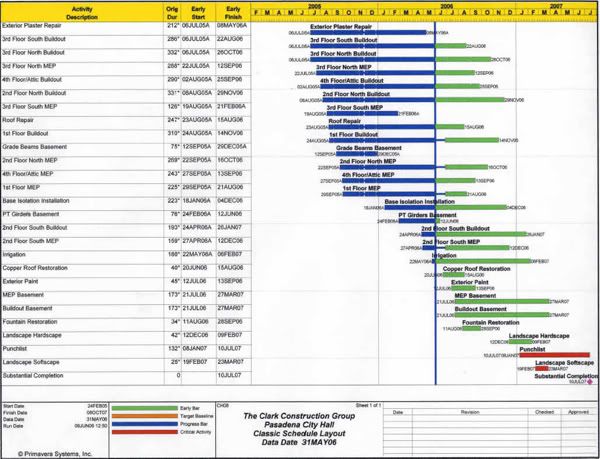
"Timetable! Timetable! What's the TIMETABLE??!!
Calm. Down.
Oh, I've got your timetable, alright. But you have to promise to sit still long enough for me to explain a teeny bit to you, okay? Okay.
Speaking of "timetables," to better understand the schedule for withdrawing from Iraq, we first need to look at a bit of a timeline. So -
- come along with me now as we travel back in time [cue dreamy harp music] . . .
ATTENTION, BOYS AND GIRLS: SECRET HIDDEN MESSAGE INSIDE
Hidden in this diary are all the clues you need to solve the mystery of Why We Went To War In Iraq! See if you can figure it out by carefully reading the whole diary – including between the lines! Good Luck!(HINT: The words "weapons of mass destruction" and "spreading democracy" are NOT part of the answer!)
In June 1997, during the heart of the Clinton administration, Project for a New American Century (PNAC) was founded. Among those signing its founding Statement of Principles were Dick Cheney, Donald Rumsfeld, I. Lewis "Scooter" Libby, Zalmay Khalilzad (current U.S. ambassador to Iraq), Paul Wolfowitz, Jeb Bush and Elliot Abrams.
In January 1998, PNAC wrote a letter to then-President Bill Clinton advocating the removal of Saddam Hussein from power in Iraq. The letter read, in part (emphases added):
if Saddam does acquire the capability to deliver weapons of mass destruction . . . a significant portion of the world’s supply of oil will all be put at hazard. [snip]
The only acceptable strategy is one that . . . [consists of taking] military action as diplomacy is clearly failing. [I]t means removing Saddam Hussein and his regime from power. That now needs to become the aim of American foreign policy.
We urge you to articulate this aim, and to turn your Administration's attention to implementing a strategy for removing Saddam's regime from power.
That letter was signed by, among others, Donald Rumsfeld, Zalmay Khalilzad, John Bolton, Richard Armitage, Richard Perle, Paul Wolfowitz, William Kristol, Bill Bennett and James Woolsey.
At the time, Iraq was a sovereign nation, with whom we were not at war, nor had we been for seven years.
In September 2000, PNAC came out with its seminal work, "Rebuilding America's Defenses," (PDF file) which contained, among much else, the following passages:
From an American perspective, the value of such bases would endure even should Saddam pass from the scene. Over the long term, Iran may well prove as large a threat to U.S. interests in the Gulf as Iraq has. And even should U.S.-Iranian relations improve, retaining forward-based forces in the region would still be an essential element in U.S. security strategy given the longstanding American interests in the region.
[snip]
As a supplement to forces stationed abroad under long-term basing arrangements, the United States should seek to establish a network of "deployment bases" or "forward operating bases" to increase the reach of current and future forces. Not only will such an approach improve the ability to project force to outlying regions, it will help circumvent the political, practical and financial constraints on expanding the network of American bases overseas.
[snip]
elements of U.S. Army Europe should be redeployed to Southeast Europe, while a permanent unit should be based in the Persian Gulf region [emphases added]
That study was signed by, among others, Paul Wolfowitz, I. Lewis "Scooter" Libby and William Kristol.
At the time, Iraq was a sovereign nation, with whom we were not at war, nor had we been for nine years.
"Rebuilding America's Defenses" also contains the following statement:
Further, the process of transformation, even if it brings revolutionary change, is likely to be a long one, absent some catastrophic and catalyzing event – like a new Pearl Harbor.
So - why all this background on PNAC? Well, PNAC's philosophies and core beliefs have come to play a huge role in the foreign policy practices of the Bush administration - and hence, in its course of action with regard to Iraq. Many members of and contributors to PNAC went on and continue to play important roles in that administration, as shown in this alphabetical chart from Wikipedia:
Elliott Abrams National Security Council Representative for Middle Eastern Affairs President of the Ethics and Public Policy Center Richard Armitage Department of State (2001-2005) Deputy Secretary of State Leaked Valerie Plame's identity to Robert Novak in the Plamegate scandal. John R. Bolton Department of State U.S. Ambassador to the United Nations Previously served as Undersecretary for Arms Control and International Security Affairs in the first administration of GWB. Richard Cheney Bush Administration Vice President Seth Cropsey Voice of America Director of the International Broadcasting Bureau Paula Dobriansky Department of State Undersecretary of State for Global Affairs Francis Fukuyama President's Council on Bioethics Council Member Professor of International Political Economy at Johns Hopkins University Bruce Jackson U.S. Committee on NATO President Former Lockheed Martin VP for Strategy & Planning Zalmay Khalilzad U.S. Embassy Baghdad, Iraq U.S. Ambassador to Iraq Previously served as U.S. Ambassador to Afghanistan from November 2003 to June 2005 I. Lewis Libby Bush Administration (2001-2005) Chief of Staff for the Vice President Indicted by Grand Jury on charges of Obstruction of Justice, False Statements, and Perjury and resigned October 28, 2005. Peter W. Rodman Department of Defense Assistant Secretary of Defense for International Security Donald Rumsfeld Department of Defense (2001-2006) Secretary of Defense Former Chairman of the Board of Gilead Sciences Developer of Tamiflu Randy Scheunemann U.S. Committee on NATO, Project on Transitional Democracies, International Republican Institute Member Founded the Committee for the Liberation of Iraq. Paul Wolfowitz World Bank President Deputy Secretary of Defense, 2001-2005 Dov S. Zakheim Department of Defense Comptroller Former V.P. of System Planning Corporation Robert B. Zoellick Department of State Deputy Secretary of State Office of the United States Trade Representative (2001-2005);
On January 21, 2001, President George Bush was inaugurated. On January 29, 2001, newly minted Vice President Dick Cheney (who just six months earlier had been CEO of Halliburton, one of the world's largest oil and gas exploration and construction companies), being well-known for his public decorum, had the courtesy to wait a full eight days after the last of the stragglers had been sent home from the last of the inauguration parties, the last of the confetti had been swept up and the last of the bunting had been taken down, before convening - behind closed doors, doors that would remain closed by the Supreme Court and appellate courts - what was called an "energy task force," (officially, the National Energy Policy Development Group). The task force's ostensible purpose, according to President Bush, was to
report back to me, and to the nation, how best to cope with high energy prices and how best to cope with reliance upon foreign oil; how best to encourage the development of pipelines and power-generating capacity in the country so that we can help our fellow citizens.
Curiously, the president did not specify in exactly which country the task force would seek to encourage the development of pipelines. Nor was it immediately clear how certain documents such as "Foreign Suitors for Iraqi Oilfield Contracts," would help in determining "how best to cope with reliance upon foreign oil."
At the time, Iraq was a sovereign nation, with whom we were not at war, nor had we been for 10 years. Why was a domestic energy task force discussing potential suitors for Iraqi oilfield contracts?
Another puzzling document was a map of Iraq, with oilfields and pipelines called out, and most of the western desert region divvied up into "blocks."
At the time, Iraq was a sovereign nation, with whom we were not at war, nor had we been for 10 years. Why was a domestic energy task force circulating a map of Iraq's oilfields and pipelines?
The map and the documents are dated March 2001, two months after George Bush and Dick Cheney took office, six months before 9/11, and two years before the invasion of Iraq.
Never one to wait until the last minute, that Dick Cheney. From The New Yorker:
Additional evidence that Cheney played an early planning role is contained in a previously undisclosed National Security Council document, dated February 3, 2001. The top-secret document, written by a high-level N.S.C. official, concerned Cheney’s newly formed Energy Task Force. It directed the N.S.C. staff to coöperate fully with the Energy Task Force as it considered the "melding" of two seemingly unrelated areas of policy: "the review of operational policies towards rogue states," such as Iraq, and "actions regarding the capture of new and existing oil and gas fields." [emphases added]
At the time, Iraq was a sovereign nation, with whom we were not at war, nor had we been for 10 years. Why was the National Security Council talking about "the capture of new and existing oil and gas fields"?
On September 11, 2001 the PNAC neocons got the "new Pearl Harbor" they needed to implement their plans:

They did not lose any time. On September 20, 2001, using the terrorist attacks as a rationalization, PNAC wrote a letter to President Bush, exhorting him to attack Iraq. While some might object to tying Iraq to the 9/11 attacks, in fact, PNAC simply was doing what it had been doing for more than four years: pushing for military action against Iraq. The attacks of September 11 merely gave the organization another fulcrum with which to apply leverage.
But even if evidence does not link Iraq directly to the attack, any strategy aiming at the eradication of terrorism and its sponsors must include a determined effort to remove Saddam Hussein from power in Iraq.
The Bush administration hardly needed the urging.
By March 2002, a full year before the invasion of Iraq, George Bush knew exactly what he was going to do about Saddam Hussein:
"F**k Saddam, we're taking him out."
At the time, Iraq was a sovereign nation, with whom we were not at war, nor had we been for 11 years.
The public rhetoric ratcheted up, to the point where the neocons' Iraqi-exile darling Ahmed Chalabi was able to say in September 2002, six months before the first bombs fell on Baghdad,
"American companies will have a big shot at Iraqi oil."
A big shot, indeed.
Prior to the 2003 invasion, the principal vehicle for planning the new post-war Iraq was the US State Department’s Future of Iraq project. This initiative, commencing as early as April 2002, involved meetings in Washington and London of 17 working groups, each comprised of 10-20 Iraqi exiles and international experts selected by the State Department.
The "Oil and Energy" working group met four times between December 2002 and April 2003. Although the full membership of the group has never been revealed, it is known that Ibrahim Bahr al-Uloum, the current Iraqi Oil Minister, was a member. The 15-strong oil working group concluded that Iraq "should be opened to international oil companies as quickly as possible after the war" and that "the country should establish a conducive business environment to attract investment of oil and gas resources."
On March 20, 2003, the United States of America invaded Iraq, a sovereign nation. Saddam Hussein's government collapsed within three weeks. PNAC's long-sought dream of overthrowing Hussein's regime had been realized. In the chaos shortly after Saddam's fall, U.S. troops had the job of guarding just one government building: the Iraqi Oil Ministry. Looters, vandals and insurgents were given carte blanche to the country's museums and munitions dumps.
Construction of military bases began almost immediately after the invasion. For the first year or so after the invasion, hundreds of temporary bases were thrown together with the intent of supporting ongoing, relatively short-term operations. But that had changed by March 2004, when the Chicago Tribune could report this:
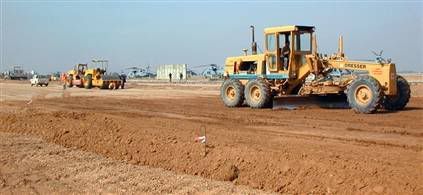
Now U.S. engineers are focusing on constructing 14 "enduring bases," long-term encampments for the thousands of American troops expected to serve in Iraq for at least two years. The bases also would be key outposts for Bush administration policy advisers.
Those 14 bases were scattered about the country, seemingly at random, at least from a glance at this map:
Meantime, the U.S. had put in place a colonial viceroy of sorts in Paul Bremer, head of the Coalition Provisional Authority (CPA). Under the temporary governance of the CPA, laws were enacted which essentially made Iraq an absolutely free-trade zone for foreign investors. Foreign companies could profit from Iraqi resources and take their profits out of the country, without any requirement to pay taxes, or to reinvest in Iraq. Those laws remain in place today, and have priority over any subsequent conflicting laws, including the Iraqi constitution.
But not to worry. Even the Iraqi constitution was very foreign-business friendly. It should be - it was written with the heavy hand of Iraq's U.S. occupiers all over it. As a result, the fledgling Iraqi government made sure that the final draft of the constitution, presented to the Iraqi people for their approval in August 2005, included provisions that would facilitate foreign investment in, and massive profit from, Iraq's oilfields.
In the last few days before that final draft of the constitution came out, a key change was made to it:
Another key article disappeared from the final (ie, today's) draft. It used to be Article 16, according to which:
1) It is forbidden for Iraq to be used as a base or corridor for foreign troops.
2) It is forbidden to have foreign military bases in Iraq.
3) The National Assembly can, when necessary, and with a majority of two thirds of its members, allow what is mentioned in 1 and 2 of this article.
Here's how Riverbend reported it in her "Baghdad Burning" blog:
The most interesting article in Chapter 1, however, was in the first draft of the constitution published on August 22 by some newspapers but it isn’t in the final draft (at least it’s not in the New York Times English version). It is numbered Article (16), in the version of the draft constitution it appeared in:
Article (16):
1. It is forbidden for Iraq to be used as a base or corridor for foreign troops.
2. It is forbidden to have foreign military bases in Iraq.
3. The National Assembly can, when necessary, and with a majority of two thirds of its members, allow what is mentioned in 1 and 2 of this article.This one is amusing because in the first two parts of the article, foreign troops are forbidden and then in the third, they’re kind of allowed... well sometimes- when the puppets deem it necessary (to keep them in power). What is worrisome about this article, on seeing the final version of the draft constitution, is its mysterious disappearance- in spite of the fact that it leaves a lot of leeway for American bases in Iraq. Now, in the final version of the constitution, there is nothing about not having foreign troops in the country or foreign bases, at the very least. The ‘now you see it’/ ‘now you don’t’ magical effect of this article, especially, reinforces the feeling that this constitution is an ‘occupation constitution’.
Hmm . . . So the Iraqi constitution was changed at the last minute to allow for foreign military bases on Iraqi soil. And the Iraqi constitution makes it very easy for foreign companies to own the rights to, and profit from, Iraq's oil. Hmmm . . .
Several months after the mysterious last-minute editing of the Iraqi constitution, in June 2006, a conference committee of the U.S. Senate and House of Representatives pulled the same disappearing act:
Thwarting the will of the majority, a joint House and Senate conference committee this week decided to delete language barring permanent U.S. military bases in Iraq from legislation pending in Congress. Meeting behind closed doors, negotiators from the conference committee dropped language that would ban permanent U.S. military bases in Iraq, language that both chambers had approved in the emergency war supplemental spending bill.
In March 2006, the Associated Press filed this report from Iraq, about massive construction at four airbases in Iraq (all emphases added):
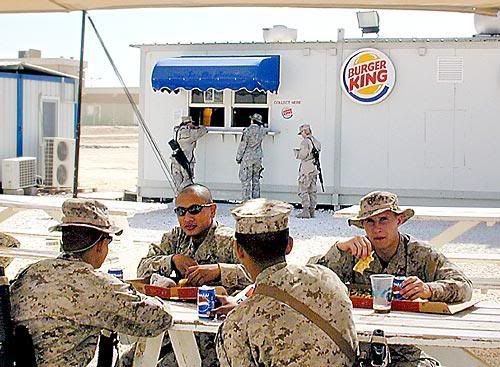
The move away from cities, perhaps eventually accompanied by U.S. force reductions, will lower the profile of U.S. troops, frequent targets of roadside bombs on city streets. Officers at al-Asad Air Base, 10 desert miles from the nearest town, say it hasn't been hit by insurgent mortar or rocket fire since October.
Al-Asad will become even more isolated. The proposed 2006 supplemental budget for Iraq operations would provide $7.4 million to extend the no-man's-land and build new security fencing around the base, which at 19 square miles is so large that many assigned there take the Yellow or Blue bus routes to get around the base, or buy bicycles at a PX jammed with customers. [snip]
Here at Balad, the former Iraqi air force academy 40 miles north of Baghdad, the two 12,000-foot runways have become the logistics hub for all U.S. military operations in Iraq, and major upgrades began last year.
Army engineers say 31,000 truckloads of sand and gravel fed nine concrete-mixing plants on Balad, as contractors laid a $16 million ramp to park the Air Force's huge C-5 cargo planes; an $18 million ramp for workhorse C-130 transports; and the vast, $28 million main helicopter ramp, the length of 13 football fields, filled with attack, transport and reconnaissance helicopters.
[snip]
Away from the flight lines, among traffic jams and freshly planted palms, life improves on 14-square-mile Balad for its estimated 25,000 personnel, including several thousand Americans and other civilians.
They've inherited an Olympic-sized pool and a chandeliered cinema from the Iraqis. They can order their favorite Baskin-Robbins flavor at ice-cream counters in five dining halls, and cut-rate Fords, Chevys or Harley-Davidsons, for delivery at home, at a PX-run "dealership."
Fourteen square miles? Nineteen square miles? Two 12,000-foot runways? (Even Hartsfield International Airport in Atlanta - the busiest airport in the world - doesn't have two 12,000-foot runways.) Burger King? Harley-Davidsons?
Sounds permanent to me. Evidently to the engineers building the place, too:
From the start, in 2003, the first Army engineers rolling into Balad took the long view, laying out a 10-year plan envisioning a move from tents to today's living quarters in air-conditioned trailers, to concrete-and-brick barracks by 2008.
So - all of this construction has kept Halliburton, and Parsons, and Fluor, and Bechtel, and a host of other administration cronies, busy making billions of dollars off the American taxpayer - and for what purpose?
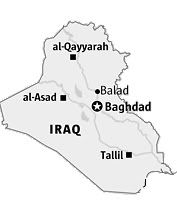
Here's a map of the four "super bases" detailed in the Associate Press story:
Huh.
Now, that's interesting
Oh, sorry - it's just that I noticed there's . . . something peculiar about the layout of those four bases. Let's see - what could it be . . . ?
Hey, I've got an idea! What if we were to take the map of these four large, permanent-seeming bases, and superimpose it on a map of the Iraqi oilfields and pipelines? (For the "oil map," though, let's use the map from the Department of Energy's Energy Information Administration - it's a bit higher-quality than the March 2001 Energy Task Force version.)
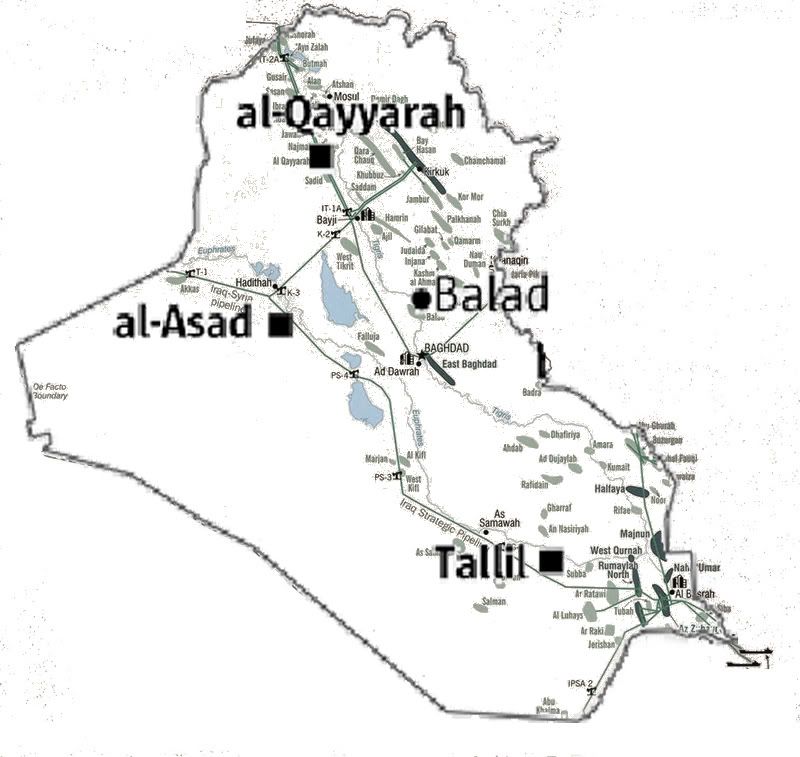
(Diarist's note: Please forgive the crude "Photoshop for by Dummies" work on these - I'm a bit of a hacker.)
Wow! Those big new airbases sure will come in handy, being so close to the pipelines and oilfields and all!
Hmm - I wonder what the superimposed map would look like if we were to use the "14-base" map from the earlier article:

Yup, pretty much the same situation. I wonder if there's a connection . . .
Now, I am not a military strategist (IANAMS), but if I had to bet, I'd guess that in the United States, military bases are not laid out in such amazingly close correspondence to oilfields and oil lines.
Well, heck! That's easy enough to test! Let's take a map of military bases here in the contiguous United States (PDF file) -
- and combine it with a map of oil pipelines in the Lower 48 -
Sure enough - the location of the bases pretty much bears no relation to the location of the pipelines:

Huh. I wonder why our pipelines and oilfields here in the U.S. don't have huge military bases right next to them, but the Iraqi pipelines and oilfields do?
Hmmm . . .
And now, guess what? Longtime Bush family hatchet man James Baker has brought the PNAC plan full circle. With the Iraq Study Group's recommendation that U.S. troops be "redeployed" to "bases on the periphery", all Bush and Cheney have to do is strenuously object, wait until Halliburton et al. complete their work, and then "acquiesce" by "redeploying" to "bases on the periphery."
"Periphery" - heh. Yeah, that's rich. "Periphery" = NeoconSpeak for "close to the oil."
My guess is, that was the plan all along. But with James Baker and Lee Hamilton's imprimatur, the whole thing sounds like some big "withdrawal."
Ummm - NO. Not really. Just a fulfillment of the neocon oilmen's plan for Iraq. And we're truly staying until the mission of securing the oil is accomplished. (Hint: In NeoconSpeak, "stable democracy" = "secure oilfields and pipelines.")
President George W. Bush brushed aside talk of civil war in Iraq on Tuesday and insisted the United States would not withdraw its forces before its mission of building a stable democracy there was complete. [emphasis added]
Okay, we're getting warmer. How about this:
And the definition of success, by the way, is for there to be a country where the terrorists and Saddamists can no longer threaten the democracy, and where Iraqi security forces can provide for the security of their people, and where Iraq is not a safe haven from which the terrorists -- al Qaeda and its affiliates -- can plot attacks against America.
I think that what the President means when he says we aren't leaving until the Iraqi government is stable enough to defend itself, is that we're not leaving until the Iraqi government is stable enough to defend these:
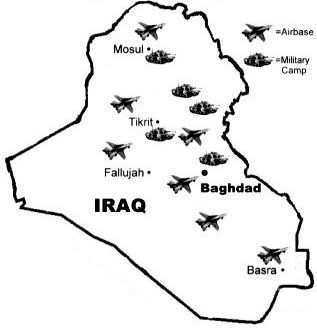
- otherwise, they'll look like this:
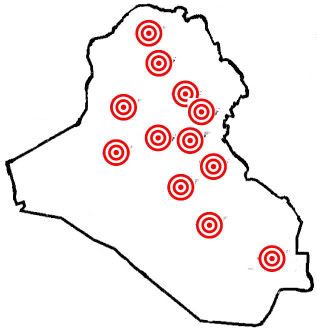
But actually, I think it's simpler than that.
Remember way back at the start of this diary, I promised you I'd share with you the Actual Timetable For Withdrawal Of American Troops From Iraq?
Ahh, yes, well, um, after all this, I must confess - I do not have the, uh, Actual Timetable For Withdrawal Of American Troops From Iraq. But if I did, if I did, I suspect it would look a lot like this:
This is a Gantt chart. Gantt charts are used to track the workflow of large and complicated projects - like construction projects, for instance.The Gantt chart allows you to plug in the various components of your project along a timeline, and to track the "critical path" of the particular components without which other components cannot be completed. Gantt charts are very familiar in the construction industry. (The Gantt chart above happens to be for the renovation of the city hall in Pasadena, California.)
Now, I don't have access to the actual Gantt charts for the construction of the huge bases at Balat, or al-Asad, or Tallil or al-Qayyarah, but rest assured, Halliburton, Bechtel, Parsons, Lockheed Martin, and all the other contractors building those projects do have them. And, until the last task on those Gantt charts - it might be installing the faucet handles in the kitchens of one of the five mess halls at Balat, for instance - is completed, our troops in Iraq aren't going anywhere. Which means, the big contractors - not Congress, not the Iraqis, not even the President of the United States - are in charge of the Actual Timetable For Withdrawal Of American Troops From Iraq.
Well, most of our troops, anyway.
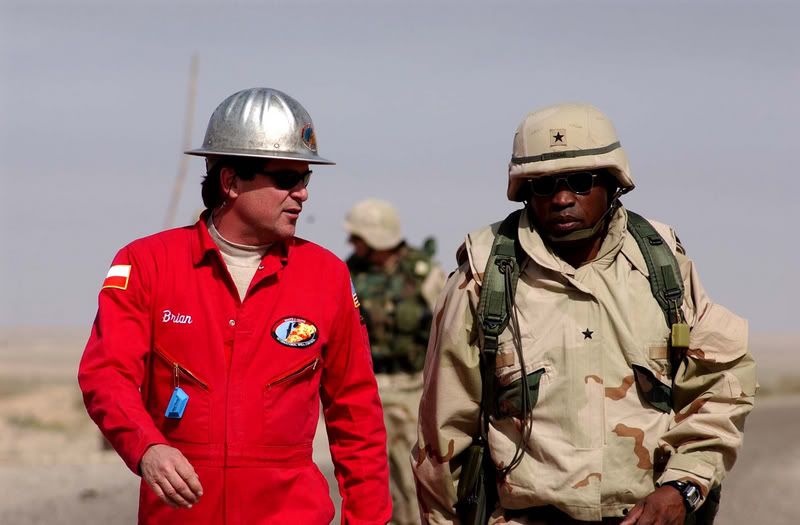
URL
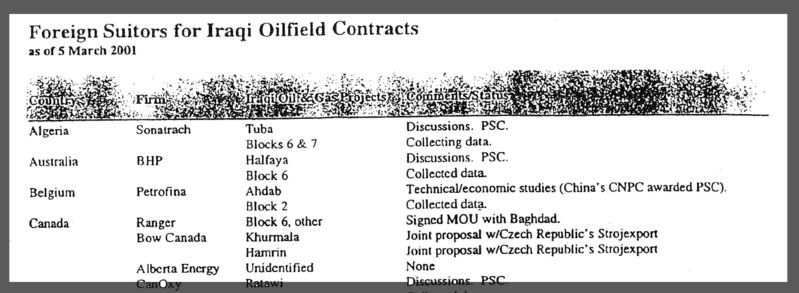
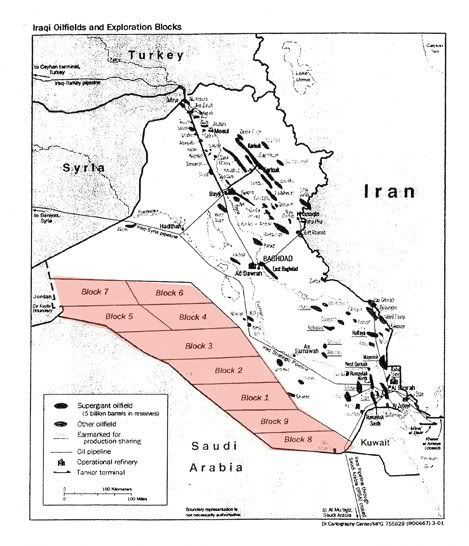
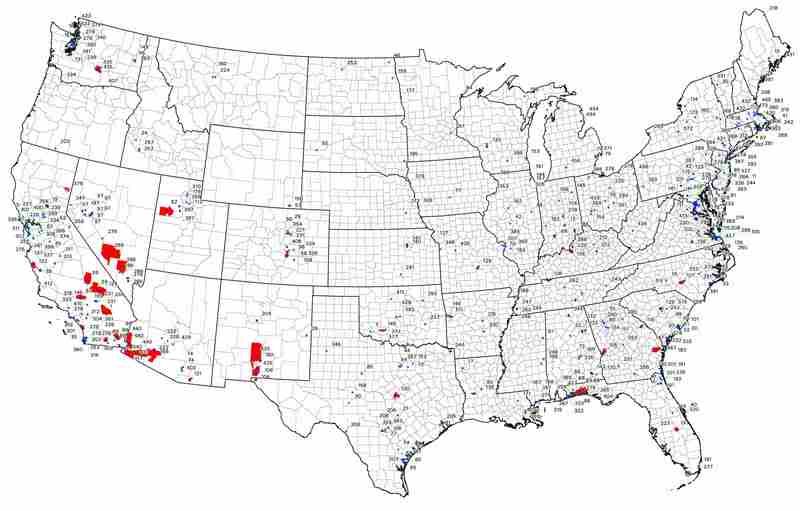
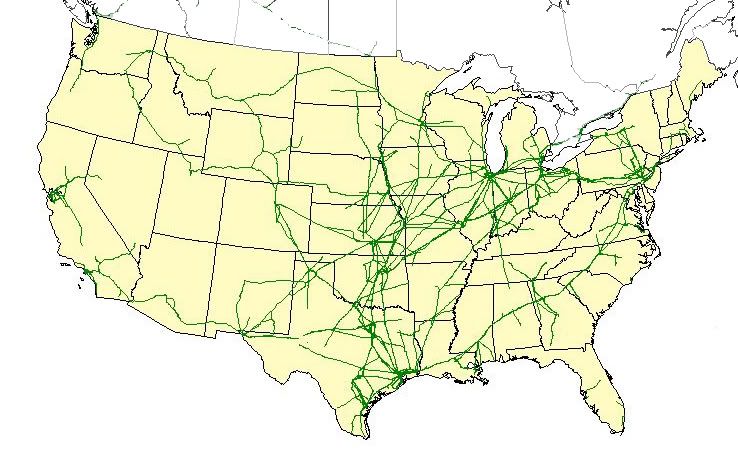
2 comments:
Do you have an outside link for this, the permalink leads to 404 not found, in case you get "suspended" again?
Fixed now. See URL above. Thanks for the notice.
Best,
Marc
CCNWON
Post a Comment